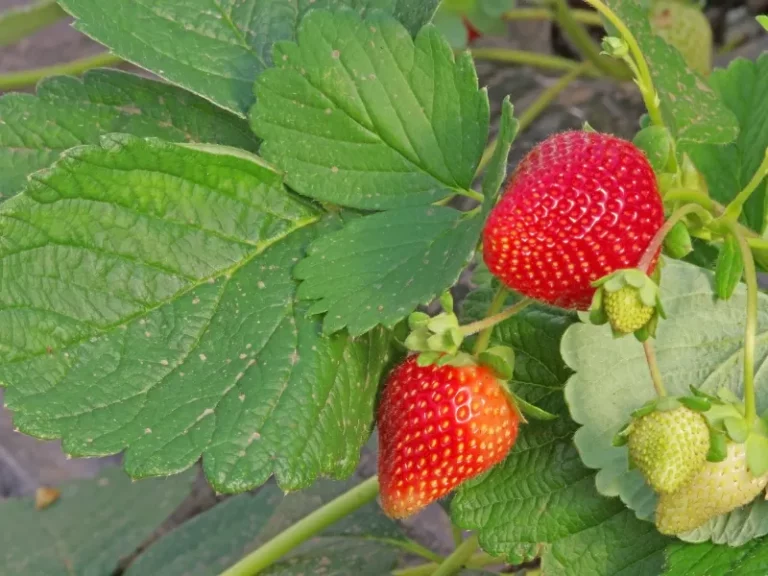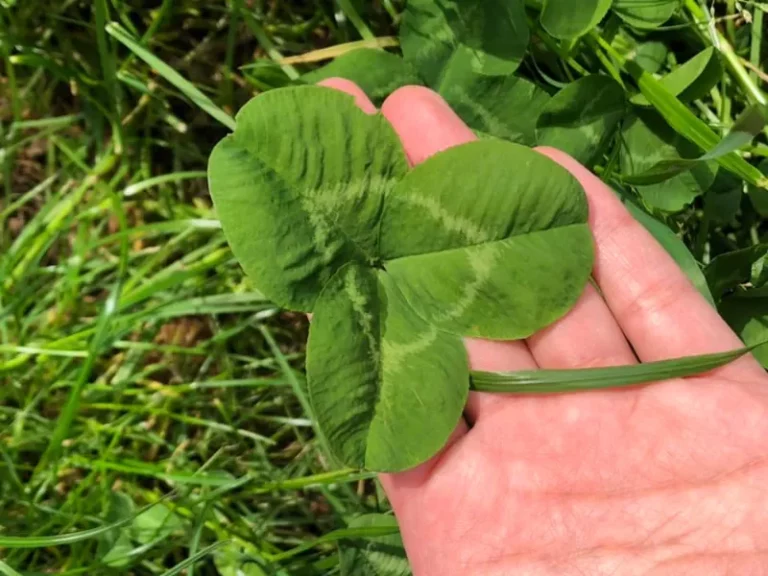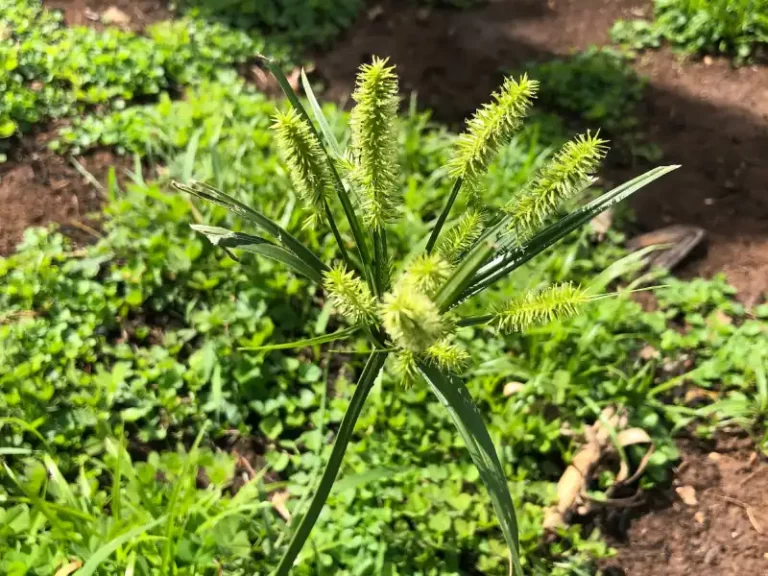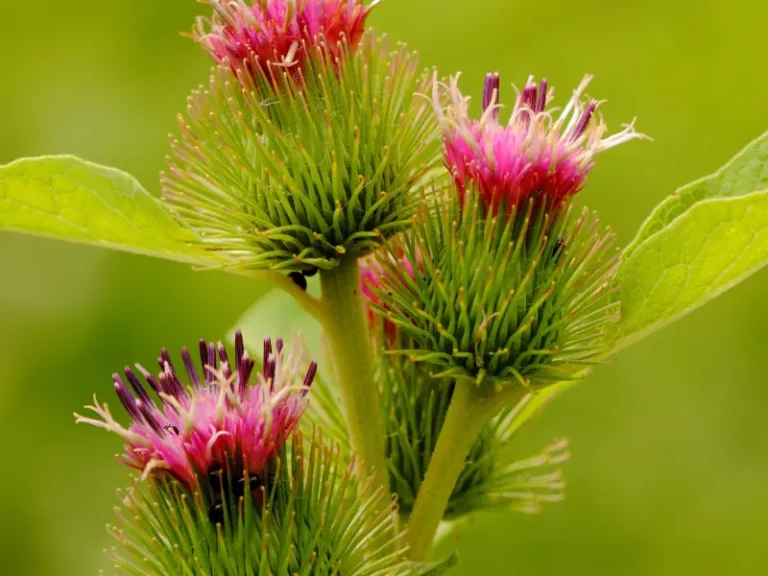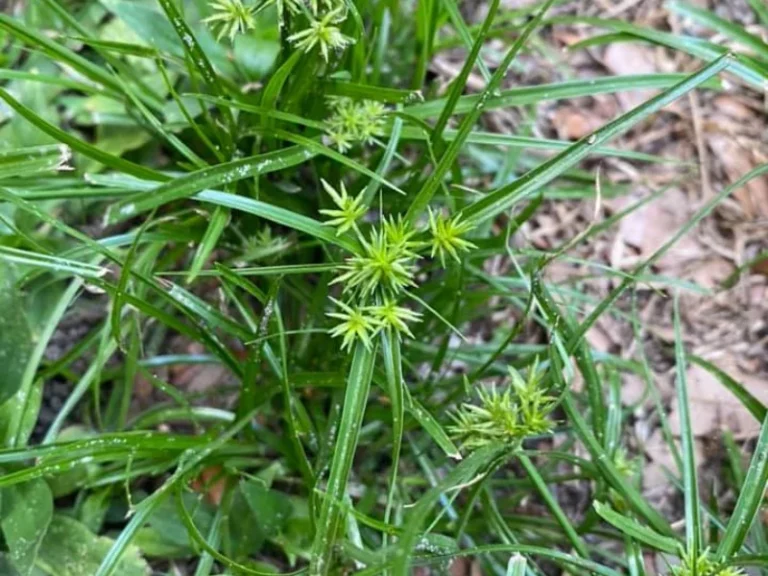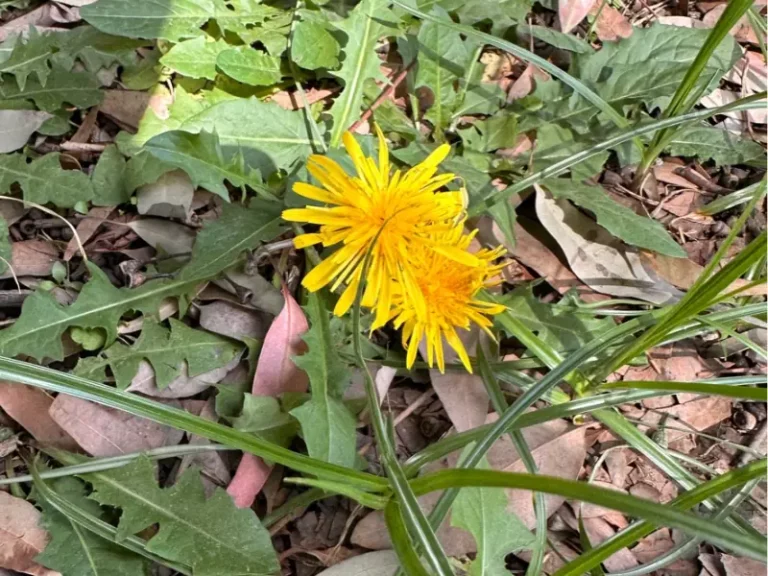Florida Weeds That Stick to You
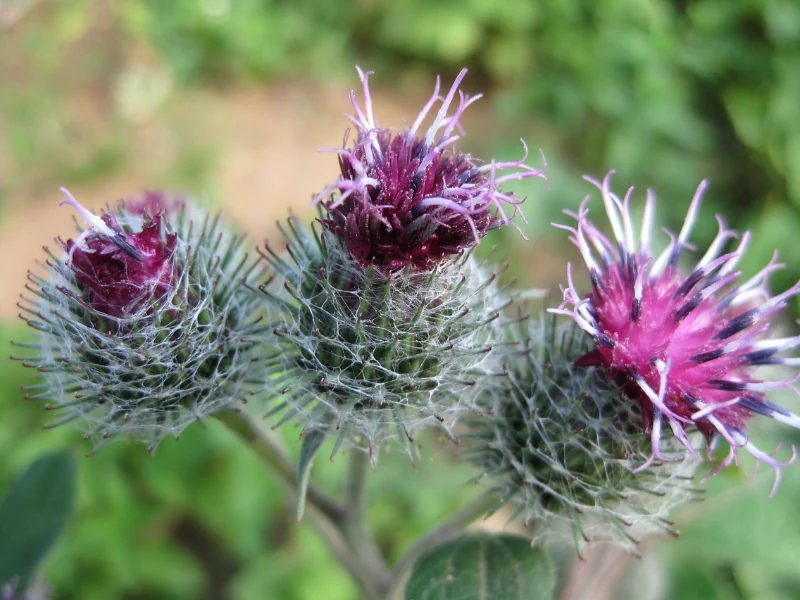
Walking through the fields and forests of Florida, it’s easy to overlook the tiny weeds that stick to your clothing and shoes. But as innocent as they seem, these pesky plants are actually using you as a means of transportation to spread their seeds far and wide. It’s a clever and effective strategy that has helped many invasive species take root in new areas.
Weeds that stick on you include beggar’s ticks, common burdock, palmer’s grappling hook, beggar’s lice, hedge parsley, enchanter’s nightshade, krameria, sandbur weed, yellow avens, catchweed bedstraw, houndstongue weed.
All these weeds have a common name, hitchhiker weeds, a group of plants or weeds that have adapted to spread their seeds by attaching themselves to animals, humans, or vehicles.
Weeds that stick to you
These weeds have hooks that can hold onto clothes, tendrils that can wrap around objects, and some produce seeds coated in sticky glue that sticks to surfaces.
Here are 11 hitchhiker weeds and how to identify them.
1. Beggar’s ticks (Bidens pilosa)
Beggar’s tick, also known as blackjack, farmer’s friend, or Spanish needle, is a sticky weed that grows in pastures, forests, roadsides, and ditch banks, often used by people. You can’t go through such spots without getting them on your socks or pants.
It is a member of the Aster family. You can recognize it by looking at its bright yellow flowers and dark green 3-inch foliage that are serrated at the margins and grow opposite on the stem.
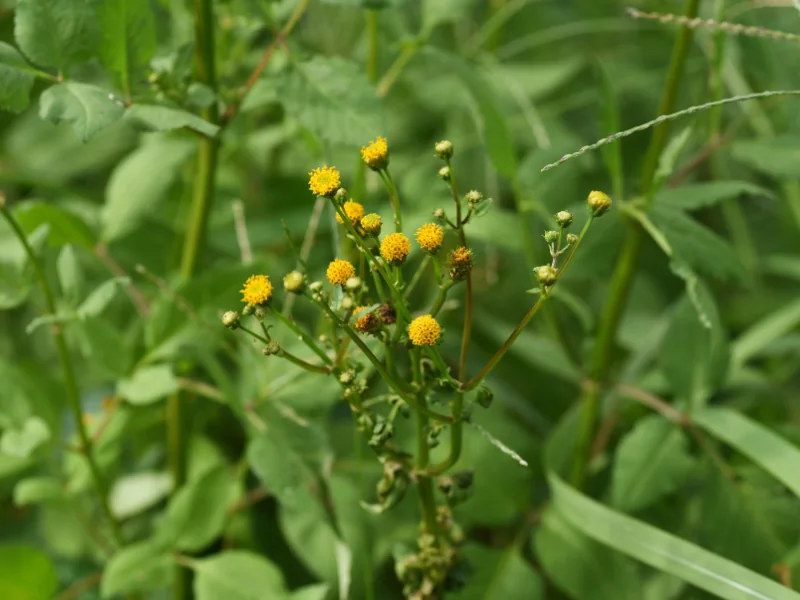
The weed produces tiny linear-shaped brown to black seeds with barbed thorns at one end. Those thorns help in seed dispersal by allowing the seeds to stick to you and enjoy the ride to a new location.
Since they managed to stick to you, they will grow in a new location, probably in your garden. They will sprout, and you must uproot them individually or use herbicide to eliminate them.
2. Common Burdock (Arctium minus)
Common burdock is another biennial hitchhiker weed with large, heart-shaped leaves that are hairy at the bottom and grow alternately on a rough multi-branched stem. The weed can grow to about 5 feet tall above the ground.
At the end of the stems are flowerheads and flowers that may be pink, white, lavender, or purple that bloom from July until frost. These flower heads will mature and dry, becoming seeds with hooked hairs that stick to you.
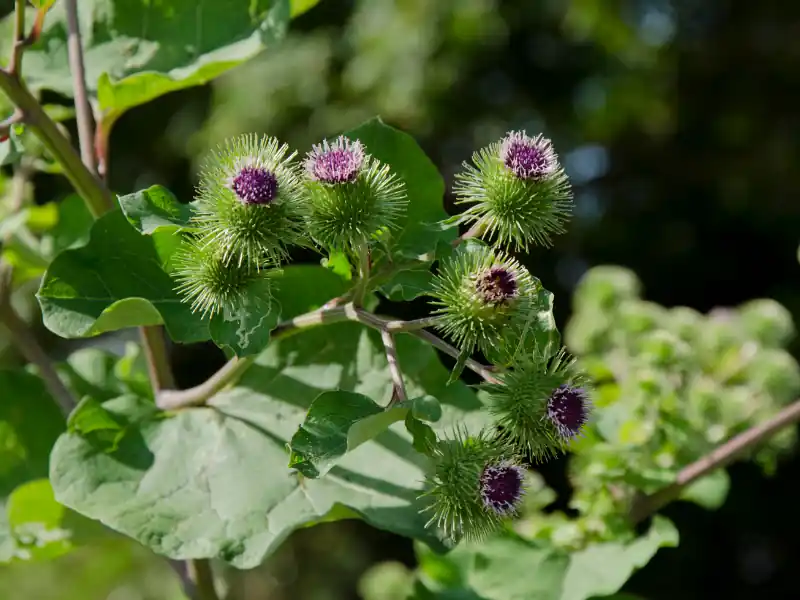
Common burdock is also toxic as it causes allergic reactions when it comes in contact with your skin. Additionally, livestock can get eye infections and mouth ulcers if they eat them.
The plant also hosts root rot, powdery mildew, and other diseases that can spread to your farm or garden plants. Therefore be careful not to carry them to your farm.
If you spot weeds on your farm, uproot them or use glyphosate herbicide to eliminate them.
Pro tip: Wear protective clothing to avoid skin contact. To prevent spreading the common burdock seeds, brush them off, freeze the clothing for an hour, and vacuum.
3. Palmer’s grappling hook (Harpagonella Palmeri)
The palmer’s grappling hook is an annual weed and a Boraginaceae family member, commonly known as the Forget-Me-Not Family.
Palmer’s grappling hook flower grows bigger and comes together to form a hood. The hood has strong white spines with hairs, making it look like a homemade grappling hook.
The strong spines on the hood stick to your socks tightly and can be hard to remove. No wonder it is also nicknamed “stick tight!”
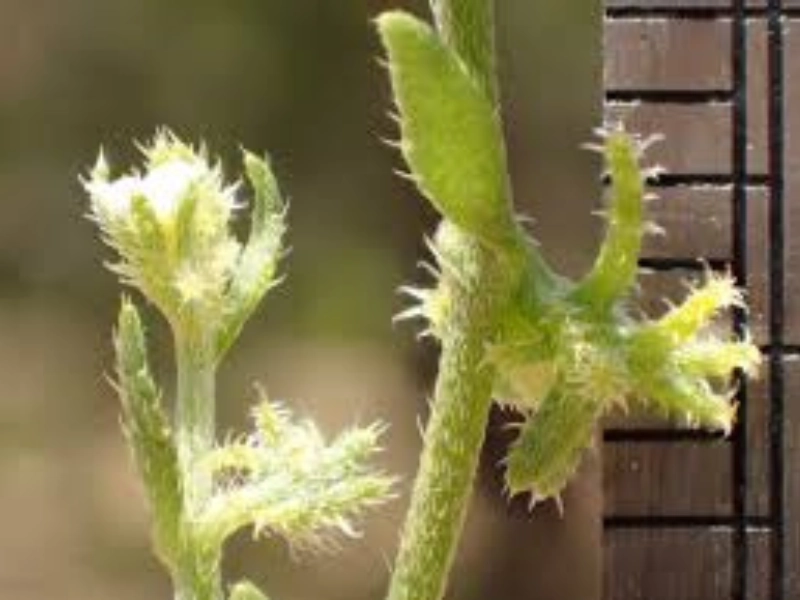
The weed is characterized by small 1.5-inched green leaves that are crescent-shaped. The plant is almost 12 inches long with an erect, herbaceous stem.
4. Beggar’s lice (Hackelia virginiana)
Beggar’s lice is a flowering weed that belongs to the Fabaceae family. It is also known as desmodium, stickseed, or tick lover.
The name stickseed comes from the plant’s burr seed pods that are very sticky and can stick tightly on clothes and fur.
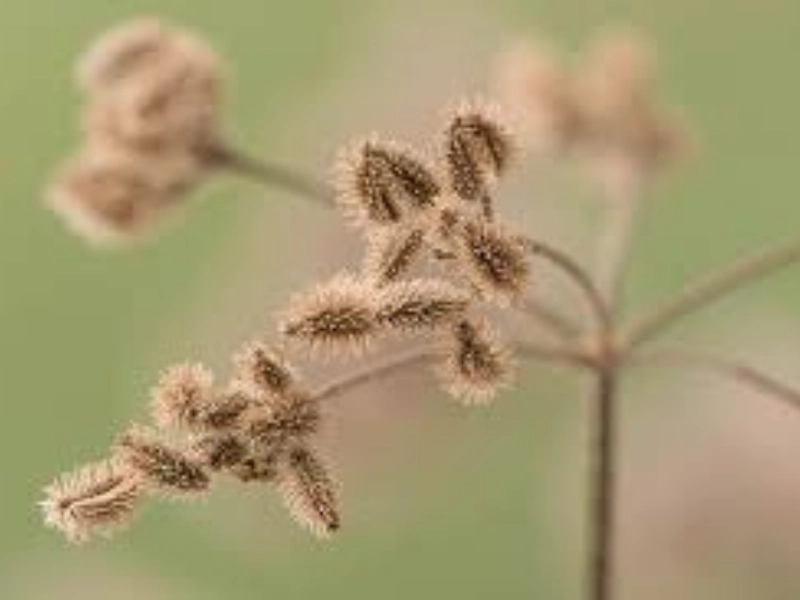
Once they get stuck to you, the whole plant might dislodge from the soil and move along with you. Before you know it, you’ve been walking all over your farm on foot, spreading its seeds.
The plant’s leaves are trifoliate, rough textured, irregularly shaped, and grow alternately on a green stem. The weed is 3 feet tall and can attach to any part of your body, from your legs to your feet.
5. Hedge parsley (Torilis arvensis)
Hedge parsley is an invasive weed notorious for its ability to outgrow adjacent plants and cling to animals’ fur or clothing. It can survive and grow in various soil conditions around gardens, pastures, and roadsides but prefers total sun exposure.
Like most other hitchhiker weeds, hedge parsley has oval burr seeds covered with bristles. The bristles are straight to slightly curved on the end, which helps them stick to clothing and fur. The seeds are green but later turn brown as the plant matures.
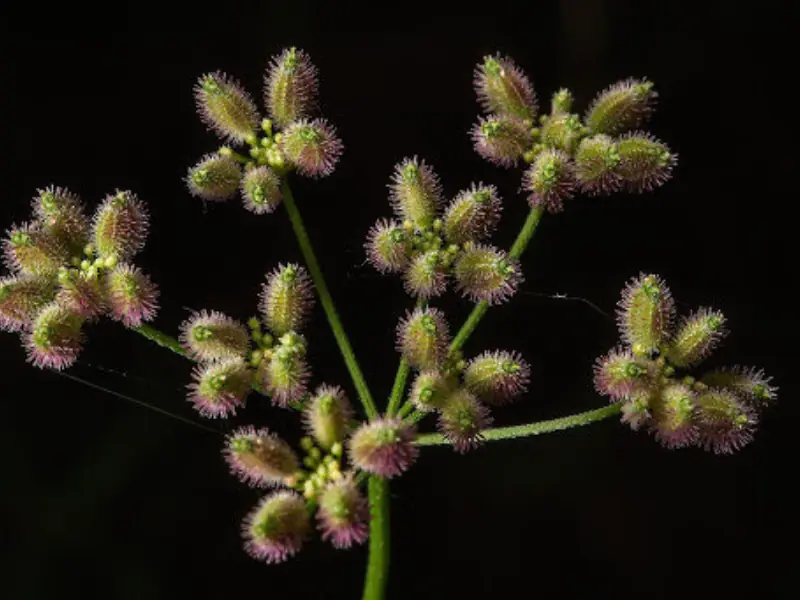
Hedge parsley can grow to 2 ft tall with slender stems covered with tiny white hairs and delicate, fern-like green leaves that are slightly hairy and grow alternatively on the stem.
The plant also has small white or pink flowers that bloom in groups at the end of the stems forming an umbrella-like shape with five petals.
Uproot the weed during spring to eliminate them from your farm.
6. Enchanter’s nightshade (Circaea lutetiana)
The enchanter’s nightshade is a perennial weed commonly growing in woodland areas. It grows to form a dense carpet on the surface, suffocating other undergrowth and denying space for other plants to grow.
The weed has opposite-growing oval leaves with a pointed tip at the end and slightly serrated at the margins. The stem is slightly hairy and holds small white flowers that grow to produce seeds covered with hooked white hairs.
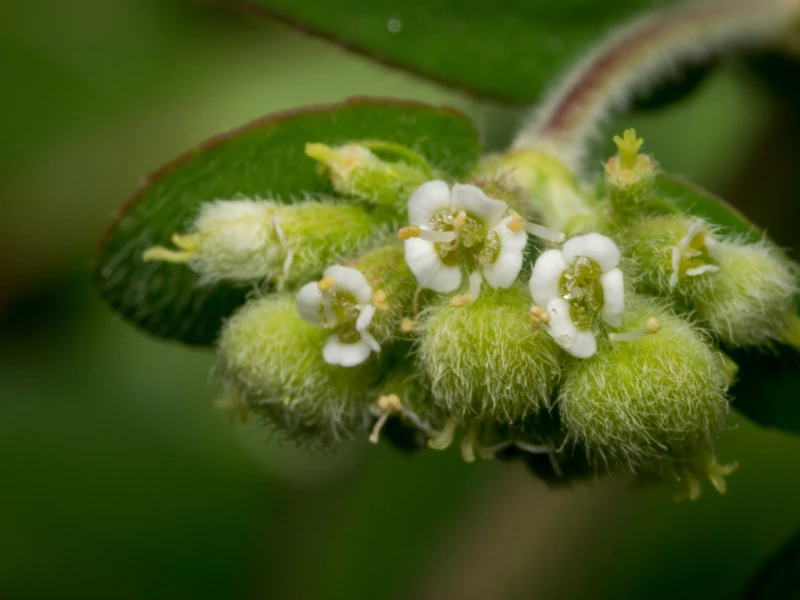
The hooked hairs aid the seed to stick on fur and clothing to disperse the seed snuggly.
The weed can also spread via underground stems allowing a single growth to spread fast and wide.
Therefore, uproot immediately to spot them.
Protip: Before heading to a new location, remove any seeds from your shoes and clothes, and discard them in the trash.
7. Krameria (Krameria grayi)
Krameria is a hardy perennial weed that grows mostly in desert habitats. It is a low-growing plant reaching about 1 inch tall but spreads wide along the ground.
It belongs to the Krameriaceae family and is characterized by small purple, showy flowers that bloom in spring and summer. These flowers are generally about 1-2 cm in diameter.
It also has small, reddish-brown stems have leaves growing alternatively on them. The leaves are narrow, elongated, and covered in fine hairs.
The fruits of krameria turn into round burred seeds that have needle-like brown spines that stick to you when you brush through them, helping in seed dispersal.
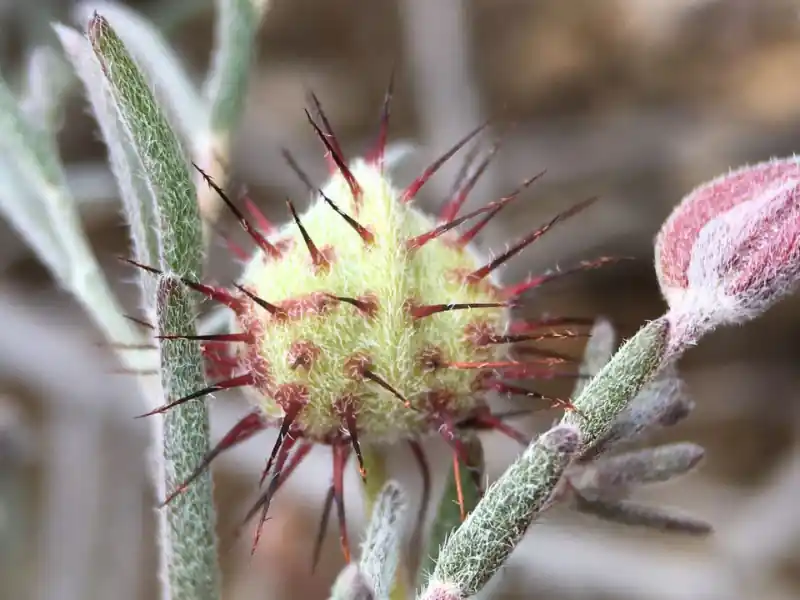
Krameria is a harmful weed that uses shallow lateral roots to absorb water and nutrients from nearby plants. To prevent its spread, uproot the plant as soon as you spot it.
Pro tip: Be careful when handling Krameria, as the plant has sharp thorns that can easily poke and scratch you.
8. Sandbur Weed (Cenchrus longispinus)
Sandbur weed is a type of grass commonly found in sandy areas. It also grows in lawns with turf grass, and it can be challenging to differentiate it from turf grass until its prickly seed heads become noticeable.
The weed is green like turf grass and can grow to about 3ft tall. It has smooth, twisted leaf blades that range from 2 to 5 inches long. There is also a light-colored area between the leaf blade and the sheath.
SUnbur weed is known for its prickly seed heads covered in about 2-inch long barbed spines, which can easily stick to clothing and skin. These burs can be painful and are difficult to remove from clothing material.
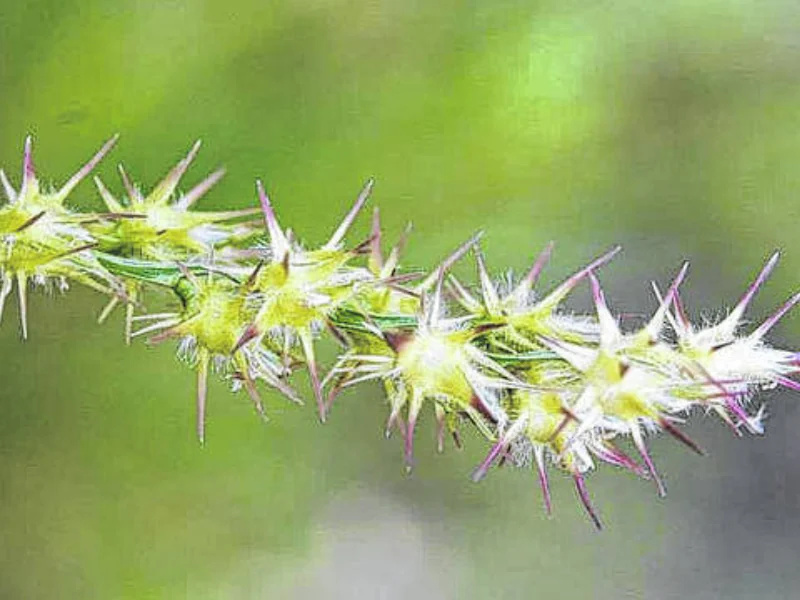
The spines help the plant to survive and reproduce. By sticking to animals or clothing, the seed heads can travel further distances and find a suitable place to grow.
9. Yellow Avens (Geum aleppicum)
Yellow avens is a native perennial weed that belongs to the Rosaceae family. It is mainly found in woodland areas, grows well in moist locations, and prefers full sun exposure but can survive in shaded areas.
The plant has a flower with five yellow petals surrounded by green calyxes with five triangular sepals bent downwards. There are also numerous yellow stamens in the flower that have a pointed tip and turn brown as the plant grows.
As the plant matures, the flower grows into a fruit with brown needle-like spikes surrounding it. The spikes are curved at the top and stick to your socks or trouser when you brush through them.
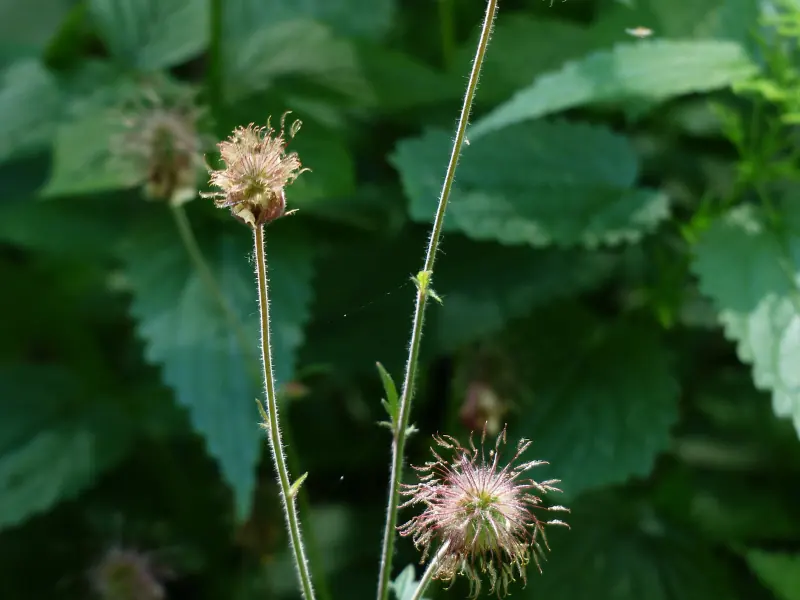
Apart from the flower, the plant has green oval-shaped leaves covered with hair on both sides. The plant has an erect growth structure and can reach about 1 meter in height.
10. Catchweed Bedstraw (Galium aparine)
Catchweed bedstraw is an annual herbaceous weed that can also be called cleavers, grip grass, and sticky willy. It can grow in various habitats but thrives best in moist soil areas.
The plant has tiny hooked hairs called trichomes on its stem, leaves, and flowers. These trichomes are what allow the plant to stick to clothing and fur.
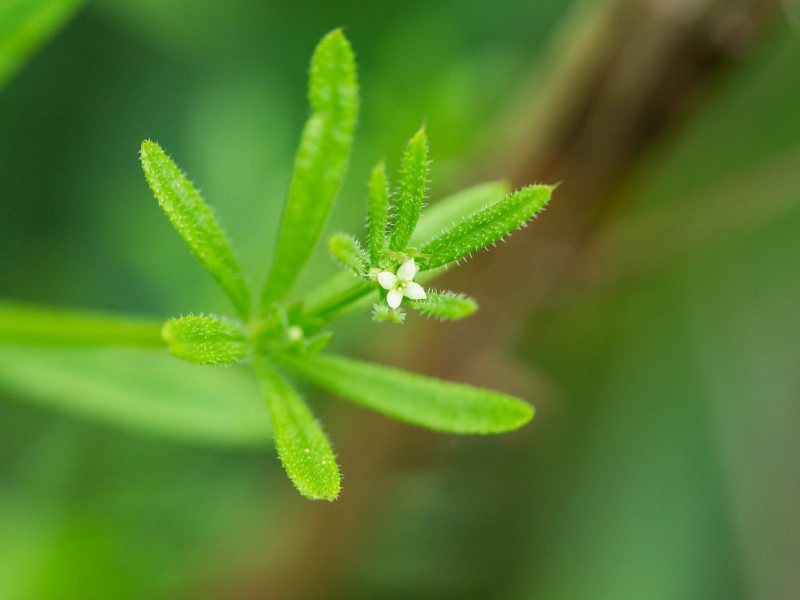
When you brush against the plant, the hooked hairs cling onto your cloth fabric, detach from the plant and remain stuck to the clothing. This mechanism helps the plant to spread its seeds and reproduce.
It is a troublesome weed that gets entangled with other beneficial plants in your field and will suffocate them if left unchecked.
FAQs
What is the name of the weeds that stick to your clothes?
Weeds that stick to you are called hitchhiker weeds.
How do you get sticker weeds out of clothes?
You can gently remove sticker weeds from clothes using a comb or brush to scrape them off. You can also try using duct tape or a lint roller to pick them up.
What types of clothes do these plants typically stick to?
Sticky plants can stick to various clothing materials, but they are most commonly found on fabrics with a rough texture, such as denim or wool. However, they can also stick to smoother fabrics like cotton or polyester.
Conclusion
Like sandbur weeds, these weeds that stick to you can be painful and difficult to remove. Therefore you should learn how to identify and prevent their spread.

